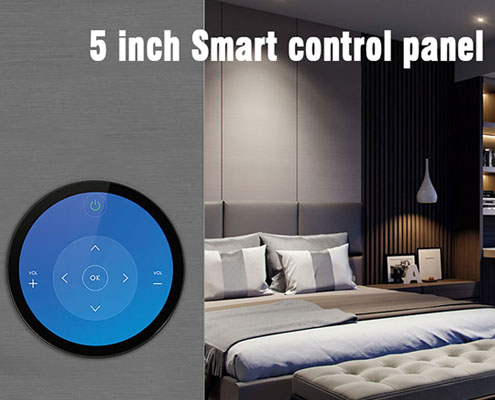Laser vs. Chemical Peels: Which Is Better for Pigmentation?

Pigmentation concerns like dark spots, melasma, and uneven skin tone can make your skin look dull and aged. While there are several ways to treat pigmentation, two of the most effective professional treatments are laser therapy and chemical peels. If you’re struggling to choose between them, this guide will help you understand both options and decide which one works best for your skin.
Let’s explore what each treatment does, how they differ, and which one is more suitable for your skin goals.

What Is Pigmentation and Why Does It Happen?
Pigmentation occurs when melanin (the pigment that gives your skin its color) is produced in excess. This can lead to dark patches or spots on the face, neck, or other parts of the body.
Some common causes include:
- Sun exposure
- Hormonal changes
- Acne scars
- Ageing
- Inflammation or injury
Both laser treatments and chemical peels aim to reduce melanin buildup and give you a clearer, more even complexion.
What Is a Laser Treatment for Pigmentation?
Laser pigmentation treatments work by targeting the deeper layers of the skin using concentrated light energy. The most popular laser used for pigmentation is the Q-Switch laser.
Key benefits of hyperpigmentation laser treatment:
- Breaks down excess melanin into smaller particles
- Evens out skin tone
- Stimulates collagen production
- Helps with deeper pigmentation issues
- Minimal downtime
Laser treatments are ideal for those with stubborn pigmentation, sun spots, freckles, and deeper melasma. They also suit people looking for faster results.
What Are Chemical Peels for Pigmentation?
Chemical peels involve applying a solution to the skin, which exfoliates the top layers and promotes new skin cell growth. Peels like glycolic acid, salicylic acid, and TCA are commonly used.
Key benefits of chemical peels:
- Removes the damaged top layer of skin
- Brightens dull and uneven skin tone
- Reduces mild to moderate pigmentation
- Improves overall texture and glow
Chemical peels are great for surface-level pigmentation, acne scars, and for people who prefer gradual improvements.
Laser vs. Chemical Peels – A Simple Comparison
Here’s how the two treatments differ, broken down into bullet points:
Effectiveness:
- Laser: Works deeper in the skin; better for severe pigmentation.
- Chemical Peels: More effective for mild to moderate surface pigmentation.
Skin Concerns Treated:
- Laser: Suitable for melasma, sun spots, freckles, post-inflammatory hyperpigmentation.
- Peels: Best for acne scars, dullness, mild pigmentation.
Downtime:
- Laser: Minimal (1–3 days of redness)
- Peels: Moderate (peeling and sensitivity for a few days)
Number of Sessions Required:
- Laser: 4–6 sessions for visible results
- Peels: 4–8 sessions depending on peel strength
Skin Types:
- Laser: Suitable for most skin types but must be done under expert care
- Peels: Customisable for sensitive or acne-prone skin
How to Choose the Best Pigmentation Treatment for You
When it comes to choosing between laser and peels, it really depends on:
- Your skin type
- Depth of pigmentation
- Desired results
- Downtime you’re comfortable with
Always consult a dermatologist before deciding. In many cases, a combination of both treatments over time may give the best outcome.
Get the Best Hyperpigmentation Treatment at Clinic Dermatech
Clinic Dermatech offers a wide range of skin pigmentation treatments that are tailored to your skin’s needs. Whether you’re struggling with hyperpigmentation on face, melasma, or uneven tone, our experts recommend the most suitable treatment—be it a chemical peel, laser session, or a combination plan.
Some of the most popular options at Clinic Dermatech include:
- Q-Switch Laser for deeper pigmentation removal
- Cosmelan and Meline Peels for stubborn melasma
- Medical Brightening Facials for maintenance and glow
- Customised skincare plans for long-term results
Our team ensures your skin is evaluated thoroughly before beginning any pigmentation treatment.
FAQs
- Is laser treatment safe for all skin tones?
Yes, but it must be done by an experienced dermatologist to avoid side effects like burns or hyperpigmentation. - How long does it take to see results from laser or peels?
Most people start seeing results after 2–3 sessions, but full results may take 4–6 sessions depending on the severity. - Can I wear makeup after the treatment?
It’s best to avoid makeup for at least 24–48 hours post-treatment to allow your skin to heal. - Do I need to use sunscreen after pigmentation treatments?
Absolutely! Sun protection is crucial after both laser and peels to prevent further pigmentation. - How much does pigmentation removal cost?
Prices vary based on the treatment and clinic. Laser treatments are usually slightly more expensive than peels.
Final Thoughts
Clinic Dermatech offers a wide range of skin pigmentation treatments that are tailored to your skin’s needs. Whether you’re struggling with hyperpigmentation on face, melasma, or uneven tone, our experts recommend the most suitable treatment—be it a chemical peel, laser session, or a combination plan.
Whether you’re dealing with hyperpigmentation, sun damage, or acne marks—there’s a solution that’s right for you. Laser treatments and chemical peels are both highly effective methods, and the right choice depends on your skin’s unique needs.




